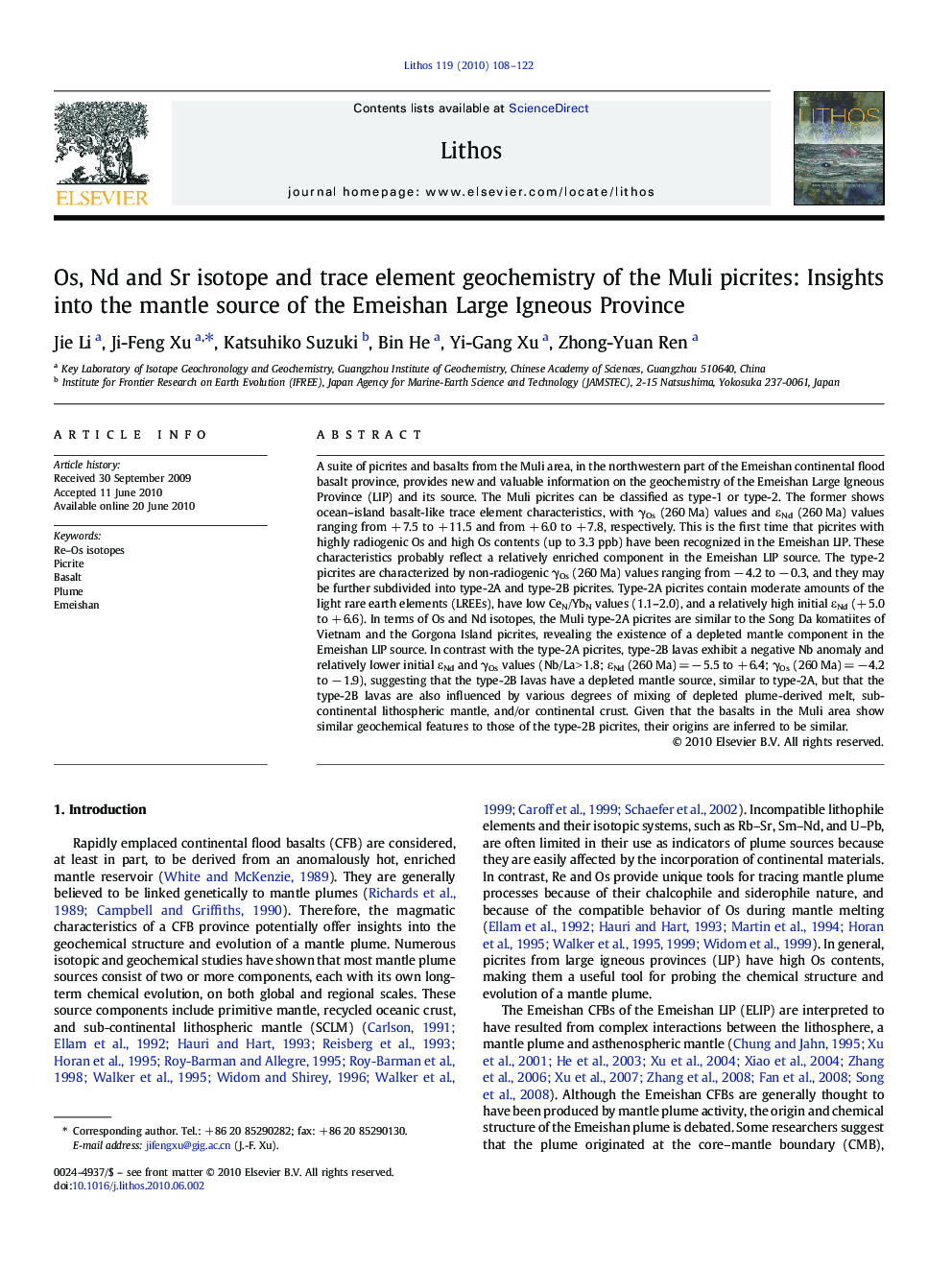| کد مقاله | کد نشریه | سال انتشار | مقاله انگلیسی | نسخه تمام متن |
|---|---|---|---|---|
| 4716914 | 1638729 | 2010 | 15 صفحه PDF | دانلود رایگان |

A suite of picrites and basalts from the Muli area, in the northwestern part of the Emeishan continental flood basalt province, provides new and valuable information on the geochemistry of the Emeishan Large Igneous Province (LIP) and its source. The Muli picrites can be classified as type-1 or type-2. The former shows ocean–island basalt-like trace element characteristics, with γOs (260 Ma) values and εNd (260 Ma) values ranging from + 7.5 to + 11.5 and from + 6.0 to + 7.8, respectively. This is the first time that picrites with highly radiogenic Os and high Os contents (up to 3.3 ppb) have been recognized in the Emeishan LIP. These characteristics probably reflect a relatively enriched component in the Emeishan LIP source. The type-2 picrites are characterized by non-radiogenic γOs (260 Ma) values ranging from − 4.2 to − 0.3, and they may be further subdivided into type-2A and type-2B picrites. Type-2A picrites contain moderate amounts of the light rare earth elements (LREEs), have low CeN/YbN values (1.1–2.0), and a relatively high initial εNd (+ 5.0 to + 6.6). In terms of Os and Nd isotopes, the Muli type-2A picrites are similar to the Song Da komatiites of Vietnam and the Gorgona Island picrites, revealing the existence of a depleted mantle component in the Emeishan LIP source. In contrast with the type-2A picrites, type-2B lavas exhibit a negative Nb anomaly and relatively lower initial εNd and γOs values (Nb/La > 1.8; εNd (260 Ma) = − 5.5 to + 6.4; γOs (260 Ma) = − 4.2 to − 1.9), suggesting that the type-2B lavas have a depleted mantle source, similar to type-2A, but that the type-2B lavas are also influenced by various degrees of mixing of depleted plume-derived melt, sub-continental lithospheric mantle, and/or continental crust. Given that the basalts in the Muli area show similar geochemical features to those of the type-2B picrites, their origins are inferred to be similar.
Journal: Lithos - Volume 119, Issues 1–2, September 2010, Pages 108–122